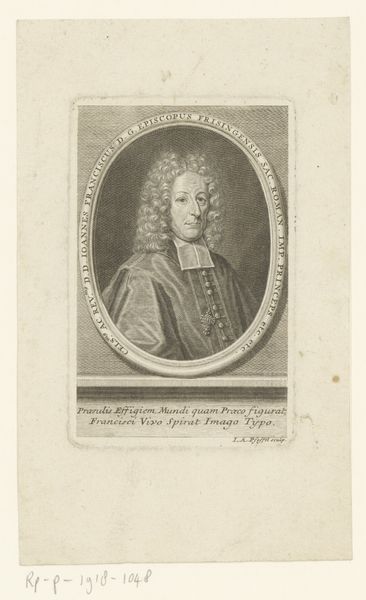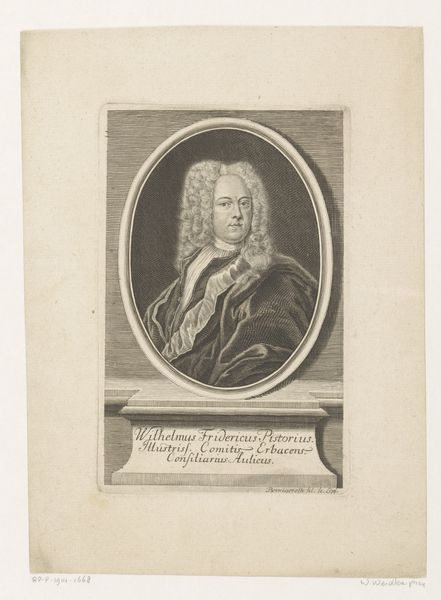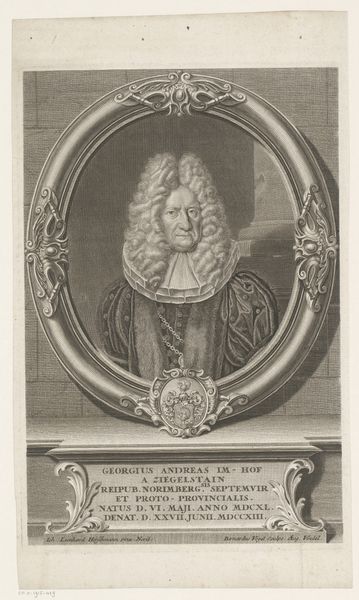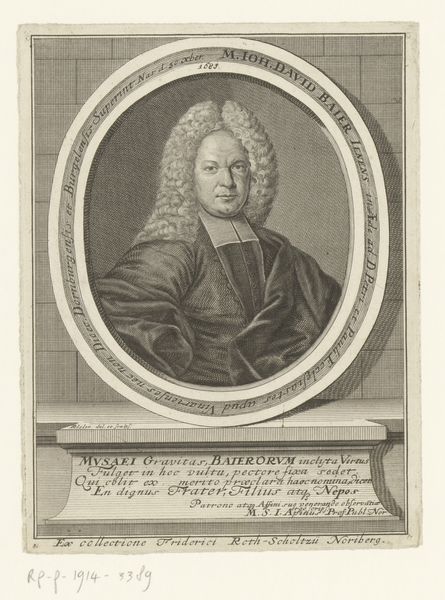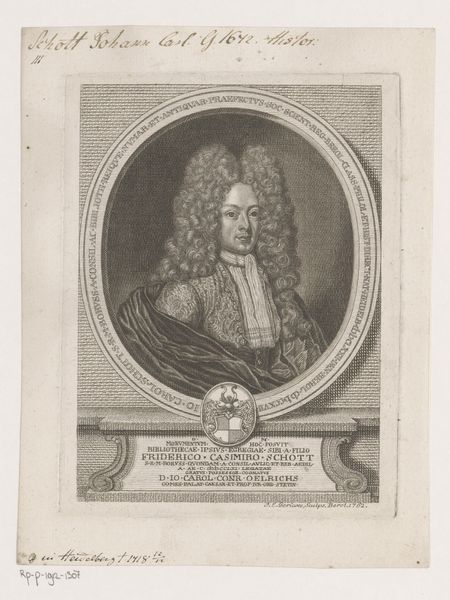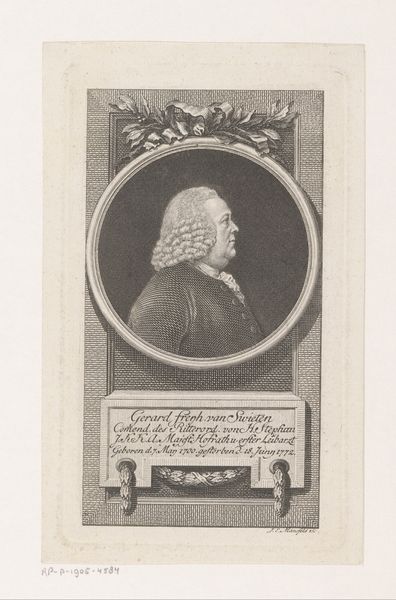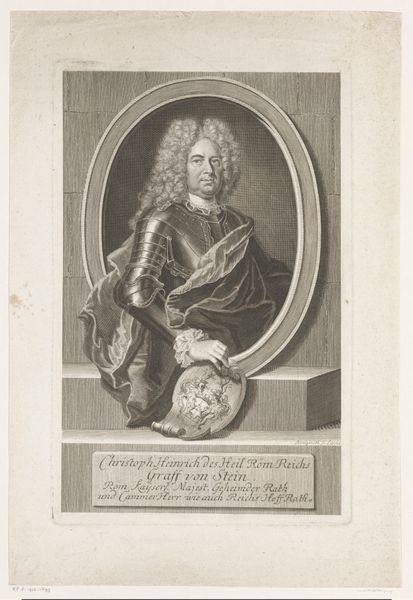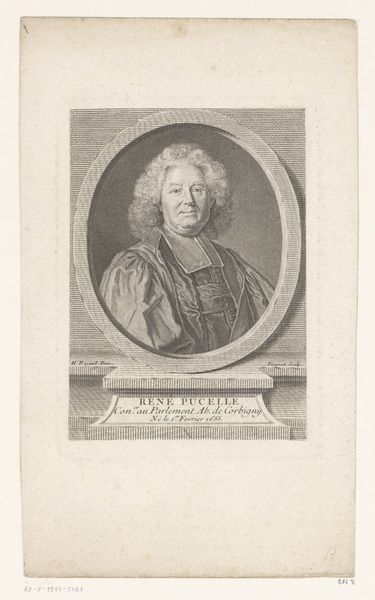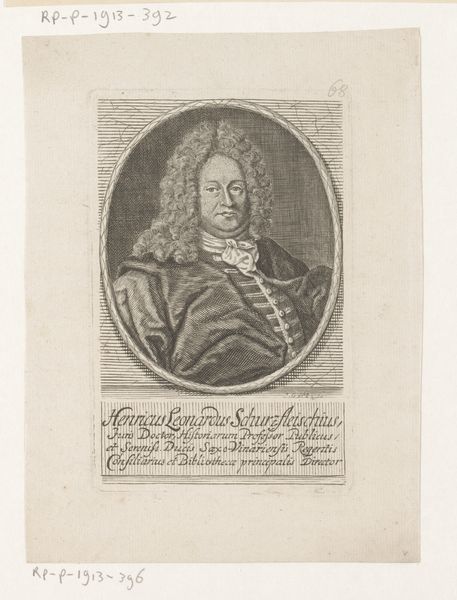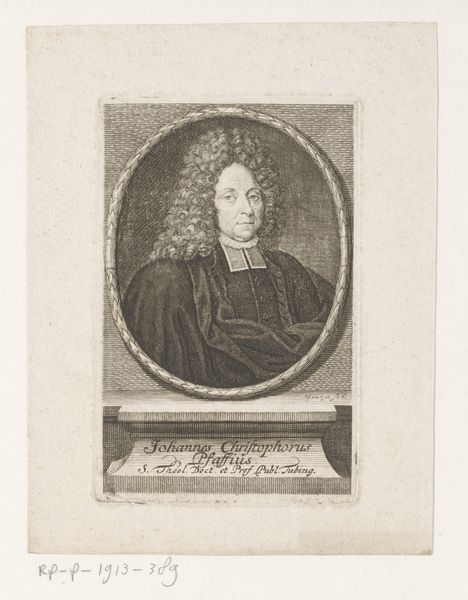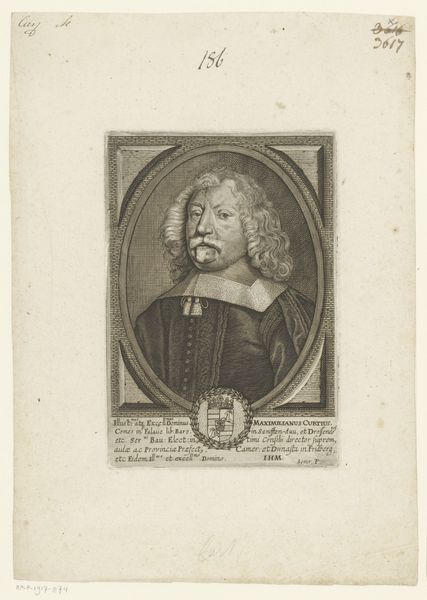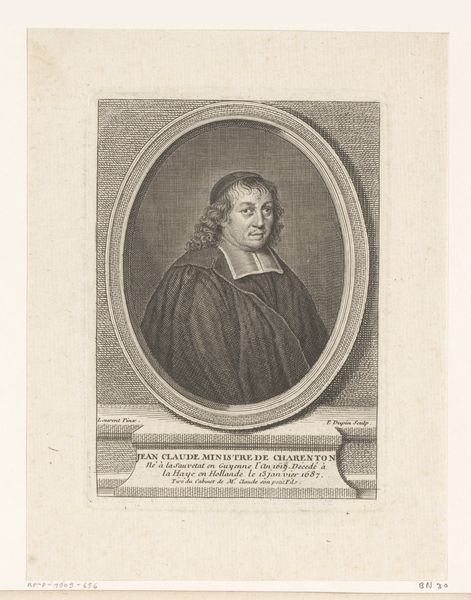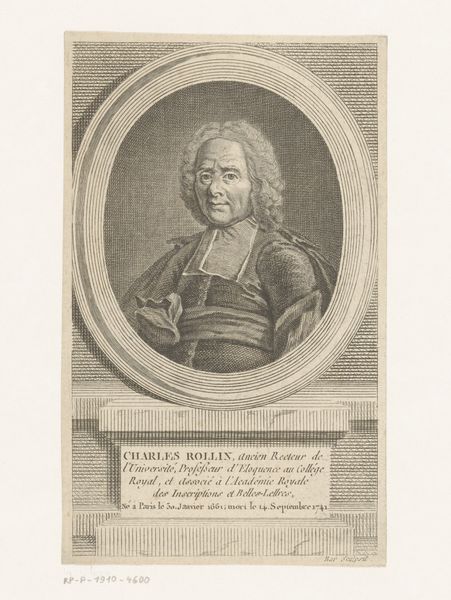
print, paper, engraving
#
portrait
#
baroque
# print
#
paper
#
line
#
engraving
Dimensions: height 145 mm, width 105 mm
Copyright: Rijks Museum: Open Domain
Curator: Here we have a print from the 18th century, sometime between 1722 and 1775, located at the Rijksmuseum. It's a portrait by Georg Friedrich Schmidt, engraved on paper, titled "Portret van P.ierre du Bosc." It's a rather formal portrait. Editor: My goodness, he looks like he’s seen something startling! There's a formality to it, yes, but also a touch of... apprehension? Is it just the way the light catches his eye, or is there something more there? The Baroque liked drama, so I can't help but project! Curator: Schmidt, a highly skilled engraver, created this print likely as a commercial venture. Think about the labor involved in engraving each line, the multiplication of imagery via print, the networks for distribution... All so many Pierre du Boscs reproduced for consumption! It makes the portrait both an individual likeness and a commodity. Editor: Absolutely, and look at the wig – what a glorious construction. It must have taken hours of labor to create and maintain! This Pierre du Bosc, whoever he was, he clearly participated in and benefitted from an economy of appearances. There's real social performance baked right into the etching here, wouldn't you say? Curator: Indeed. The engraving technique, with its precise lines, contributes to the formal tone. Line engraving allows for intricate detail, yet think of the standardization it imposes on the image. Consider the social conventions embedded in the choices of pose and frame. This isn’t just about representing a person; it’s about representing social status and societal roles. Editor: That's what’s so interesting: the attempt to fix or perform that status through very deliberate visual cues. Even with Schmidt's undeniable talent, you can almost feel the weight of expectations in every stroke. He’s a man performing authority as much as depicting it. Does any of it feel real? Or is this merely propaganda? I'm now looking and questioning everything about who "gets" to be preserved for posterity in this way, via art. Curator: It truly pushes us to ask these hard questions. Reflecting on the intersection between materiality and social standing is just one possible response. Editor: Beautifully said. And for me, it circles back to that original feeling: something feels trapped here within the print, both in the making and in its portrayal of the sitter. Thanks for exploring with me.
Comments
No comments
Be the first to comment and join the conversation on the ultimate creative platform.
